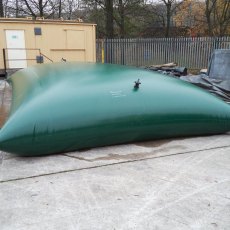Fire Water Tanks: Ensuring Safety with Reliable Storage Solutions

Fire safety is a top priority for businesses, especially those in high-risk industries or those with large premises, where effective firefighting measures can make all the difference in an emergency. One critical component of a comprehensive fire safety system is the fire water storage tank. Designed to store a dedicated water supply for fire suppression, these tanks provide immediate access to high volumes of water when every second counts. Here, we explore the role of fire water tanks in emergency preparedness, compliance with Irish fire safety regulations, and the importance of choosing the right storage solution for your business.
The Role of Fire Water Storage Tanks in Emergency Situations
Fire water storage tanks act as a reliable and independent source of water for fire-fighting purposes. In an emergency, these tanks provide a quick and high-pressure water supply directly to fire suppression systems, such as sprinklers, hydrants, or hose reels. Since they’re dedicated specifically for emergencies, these tanks help ensure that an adequate water supply is always available, independent of other water demands on the premises.
Key benefits of fire water tanks in emergencies include:
- Immediate Response: Stored water can be quickly accessed by the fire suppression system, helping to control or extinguish flames before they spread.
- Independent Supply: By providing a separate water reserve, fire water tanks reduce reliance on municipal water supplies that might be disrupted or insufficient in emergency situations.
- Enhanced Safety for Large Facilities: For large facilities or those with high fire risks, these tanks ensure that an adequate volume of water is available, meeting the needs of industrial sprinkler systems and other fire-fighting equipment.
Fire Water Tank Compliance in Ireland
In Ireland, businesses are required to adhere to strict fire safety regulations set by local authorities and enforced by the Fire Services Act. The regulations outline that any business, especially those in high-risk industries (e.g., manufacturing, chemical processing), must have robust fire protection measures in place. Fire water storage tanks are often recommended or required, depending on the business type, size, and fire risk assessment outcomes.
Compliance requirements may include:
- Minimum Water Volume: Regulations may specify the minimum volume of water that a tank should store, based on building size, occupancy, and fire risk level.
- Regular Maintenance: Tanks must be inspected and maintained regularly to ensure they are free from leaks, contamination, and any issues that could compromise functionality.
- Accessibility for Fire Services: The tank and associated water connections should be accessible to fire services in an emergency.
Preparing Your Business with the Right Fire Water Tank
When selecting a fire water tank, businesses need to consider several factors to ensure they’re fully prepared and compliant. Here’s what to keep in mind:
- Capacity Requirements
- Choose a tank with sufficient capacity to meet regulatory and operational requirements. For large facilities or sites with high-risk factors, this may mean installing multiple tanks to provide adequate coverage.
- Tank Material
- Fire water tanks are available in various materials, such as steel, fiberglass, and concrete. Steel tanks are popular for their durability and strength, making them suitable for industrial applications. Fiberglass tanks, while lighter, offer corrosion resistance and are easier to install.
- Pressurization and Pumping Systems
- Many systems require pressurized water for effective fire suppression. Incorporate a high-quality pump system that ensures a steady flow of water at the necessary pressure.
- Location and Accessibility
- Fire water tanks should be strategically located for easy access by emergency services. Ideally, they should be placed in a secure area that is also readily accessible.
- Maintenance and Inspection Schedule
- Develop a regular inspection and maintenance plan to check for leaks, corrosion, and any mechanical issues. Routine maintenance ensures that the tank is ready for operation whenever it’s needed, minimizing potential failure during emergencies.
- Integration with Fire Safety System
- Fire water tanks should be integrated with the building’s fire suppression and alarm systems. This enables automated activation in emergencies and a streamlined response.
Benefits of a Fire Water Tank for Irish Businesses
By investing in a fire water tank, Irish businesses can enjoy a range of benefits:
- Enhanced Safety and Peace of Mind: With a dedicated emergency water supply, business owners and employees can feel confident that they are protected in case of fire.
- Reduced Insurance Premiums: Having robust fire safety measures in place can often lead to lower insurance premiums, offsetting some of the initial investment.
- Compliance with Irish Safety Standards: Meeting fire safety regulations can help businesses avoid fines and operational disruptions, ensuring smooth and compliant operations.
Trust Tanks.ie for Reliable Fire Water Tank Solutions
At Tanks.ie, we specialize in providing comprehensive fire water tank solutions tailored to your business’s unique needs.



 Login
Login
















